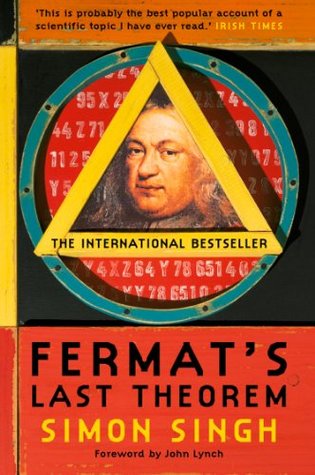More on this book
Community
Kindle Notes & Highlights
by
Simon Singh
Read between
June 30 - September 2, 2023
The nineteenth-century Norwegian Niels Henrik Abel made his greatest contribution to mathematics at the age of nineteen and died in poverty, just eight years later, also of tuberculosis. Charles Hermite said of him, ‘He has left mathematicians something to keep them busy for five hundred years’, and it is certainly true that Abel’s discoveries still have a profound influence on today’s number theorists.
At this point it is important to note that, although this theorem will forever be associated with Pythagoras, it was actually used by the Chinese and the Babylonians one thousand years before. However, these cultures did not know that the theorem was true for every right-angled triangle. It was certainly true for the triangles they tested, but they had no way of showing that it was true for all the right-angled triangles which they had not tested. The reason for Pythagoras’ claim to the theorem is that it was he who first demonstrated its universal truth.
The story of Fermat’s Last Theorem revolves around the search for a missing proof. Mathematical proof is far more powerful and rigorous than the concept of proof we casually use in our everyday language, or even the concept of proof as understood by physicists or chemists.
However, the scientific theory can never be proved to the same absolute level of a mathematical theorem: it is merely considered highly likely based on the evidence available. So-called scientific proof relies on observation and perception, both of which are fallible and provide only approximations to the truth.
The science fiction writer and futurologist Arthur C. Clarke wrote that if an eminent professor states that something is undoubtedly true, then it is likely to be proved false the next day. Scientific proof is inevitably fickle and shoddy. On the other hand mathematical proof is absolute and devoid of doubt. Pythagoras died confident in the knowledge that his theorem, which was true in 500 BC, would remain true for eternity.
Science is operated according to the judicial system. A theory is assumed to be true if there is enough evidence to prove it ‘beyond all reasonable doubt’. On the other hand mathematics does not rely on evidence from fallible experimentation, but it is built on infallible logic.
Bertrand Russell would comment on this apparent oxymoron: ‘How dare we speak of the laws of chance? Is not chance the antithesis of all law?’
Probability problems are sometimes controversial because the mathematical answer, the true answer, is often contrary to what intuition might suggest. This failure of intuition is perhaps surprising because ‘survival of the fittest’ ought to provide a strong evolutionary pressure in favour of a brain naturally capable of analysing questions of probability.
Calculus is the ability to calculate the rate of change, known as the derivative, of one quantity with respect to another.
Economics is a subject heavily influenced by calculus. Inflation is the rate of change of price, known as the derivative of price, and furthermore economists are often interested in the rate of change of inflation, known as the second derivative of price.
‘Reductio ad absurdum, which Euclid loved so much, is one of a mathematician’s finest weapons. It is a far finer gambit than any chess play: a chess player may offer the sacrifice of a pawn or even a piece, but a mathematician offers the game.’
Friendly numbers are pairs of numbers such that each number is the sum of the divisors of the other number. The Pythagoreans made the extraordinary discovery that 220 and 284 are friendly numbers. The divisors of 220 are 1, 2, 4, 5, 10, 11, 20, 22, 44, 55, 110, and the sum of all these is 284. On the other hand the divisors of 284 are 1, 2, 4, 71, 142, and the sum of all these is 220.
Number theorists consider prime numbers to be the most important numbers of all because they are the atoms of mathematics. Prime numbers are the numerical building blocks because all other numbers can be created by multiplying combinations of the prime numbers.
Mathematics consists of islands of knowledge in a sea of ignorance.


